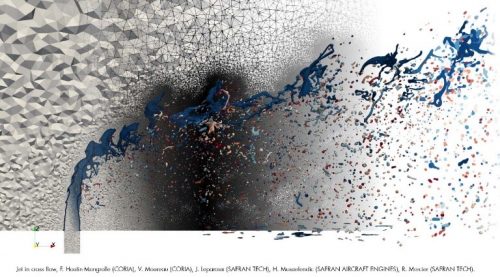Fuel atomization and evaporation in practical applications
Short description
Spray modelling for liquid fuels is another milestone to be covered for a successful engine simulation. Since the quality of atomization, evaporation and dispersion predictions directly affect the overall phenomena developing downstream, its proper modelling has a first-order impact on the whole results. In the context of LES and DNS, primary atomization can be described by deforming the mesh at the interface or by transporting Eulerian fields from which the interface is reconstructed a posteriori. After this process, the secondary atomization occurs in which the large droplets and ligaments are broken into small droplets. Although secondary atomization can be formulated in the frame of Eulerian transport equations, the size of the cells determines the minimum length that can be solved making attractive the use of the alternative Lagrangian approach. The behaviour of the droplets and their evolution have been object of an intense study over the years and, although a fruitful research has been carried out in this topic, much effort is still needed in order to develop comprehensive models for the primary atomization that can lead to physically accurate formulations for application to spray flames.
Objectives
It is considered a priority to contribute to the knowledge of liquid fuel injection and atomization due to its crucial influence on the combustion process and pollutants formation. This demonstrator includes the study of primary and secondary breakup, and the influence of heat conduction and droplet heating on the evaporation rates prior combustion takes place. The final objective will be the study of reacting sprays at relevant engine conditions.


